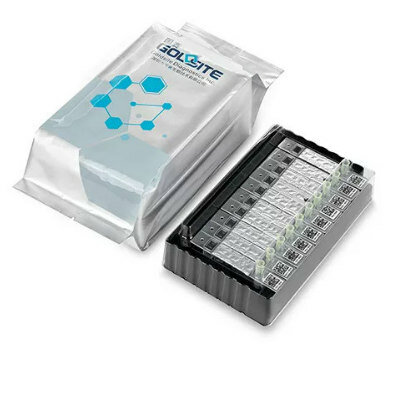Osteopontin and Osteoprotegerin Investigated In Peripheral Artery Disease
|
By LabMedica International staff writers Posted on 08 Sep 2022 |

Peripheral artery disease (PAD) is one of the many complications of systemic atherosclerosis and it is accompanied by high rates of cardiovascular diseases (CVD) morbidity and mortality. PAD is a common condition in which narrowed arteries reduce blood flow to the arms or legs.
Atherosclerosis is a complex procedure of different pathways. Among other cytokines, inflammation and calcification are known to be regulated also by well-known bone regulators, such as osteoprotegerin (OPG) and osteopontin (OPN). OPG is a secretory basic glycoprotein and a member of the tumor necrosis factor (TNF) receptor superfamily, acting as an inhibitor of bone resorption. OPN is a highly phosphorylated glycophosphoprotein having acidic characteristics and rich in aspartic acid.
Clinical Scientists at the Medical School University of Cyprus (Nicosia, Cyprus) and their colleagues enrolled 203 consecutive patients with symptomatic, established PAD requiring endovascular revascularization (percutaneous transluminal angioplasty–PTA and/or stent placement) of any or both of their lower limbs (PAD group–PADG). They also recruited 78 age- and sex-matched subjects with less than two classical cardiovascular risk factors (hypertension, diabetes, hyperlipidemia, smoking, family history of premature CAD) who served as control group (COG).
Overnight fasting, blood samples were obtained and glycemic and lipid parameters were immediately assayed in an AU560 automatic enzymatic analyzer (Olympus, Hamburg, Germany). The glycated hemoglobin (HbA1c) was determined by high-performance liquid chromatography (Menarini Diagnostics, Florence, Italy) only in diabetic patients. Serum OPN and OPG were assayed using quantikine immunoassay EIA kits (R&D Systems Inc., Minneapolis, MN, USA) and Metra, San Diego, CA, USA). The high-sensitivity C-Reactive Protein (hsCRP) levels were measured with latex-enhanced immunonephelometry (Dade Behring, Marburg, Germany).
The investigators reported that during 12-month follow-up, 82 major adverse cardiovascular events (MACE) were recorded (MACE subgroup). The rest of 124 PAD patients remained free of MACE (non-MACE subgroup). At baseline, OPG (9.89 ± 2.85 ng/mL versus 3.47 ± 1.95 ng/mL) and OPN (79.99 ± 38.29 ng/mL versus 35.21 ± 14.84 ng/mL) levels were significantly higher in PADG compared to COG, as well as in MACE subgroup compared to non-MACE subgroup (13.29 ± 3.23 ng/mL versus 10.86 ± 3 ng/mL and 96.45 ± 40.12 ng/mL versus 78.1 ± 38.29 ng/mL, respectively). An independent association of PAD with OPG and OPN was found in the whole patient cohort.
The authors concluded that baseline high OPG and OPN levels were independently associated with the presence of PAD. Even higher levels of those biomarkers were detected among PAD patients with MACE. The study was published on September 1, 2022 in the journal Cardiovascular Diabetology.
Related Links:
Medical School University of Cyprus
Olympus
Menarini Diagnostics
R&D Systems Inc
Metra
Dade Behring
Latest Clinical Chem. News
- 3D Printed Point-Of-Care Mass Spectrometer Outperforms State-Of-The-Art Models
- POC Biomedical Test Spins Water Droplet Using Sound Waves for Cancer Detection
- Highly Reliable Cell-Based Assay Enables Accurate Diagnosis of Endocrine Diseases
- New Blood Testing Method Detects Potent Opioids in Under Three Minutes
- Wireless Hepatitis B Test Kit Completes Screening and Data Collection in One Step
- Pain-Free, Low-Cost, Sensitive, Radiation-Free Device Detects Breast Cancer in Urine
- Spit Test Detects Breast Cancer in Five Seconds
- Electrochemical Sensors with Next-Generation Coating Advances Precision Diagnostics at POC
- First-Of-Its-Kind Handheld Device Accurately Detects Fentanyl in Urine within Seconds
- New Fluorescent Sensor Array Lights up Alzheimer’s-Related Proteins for Earlier Detection
- Automated Mass Spectrometry-Based Clinical Analyzer Could Transform Lab Testing
- Highly Sensitive pH Sensor to Aid Detection of Cancers and Vector-Borne Viruses
- Non-Invasive Sensor Monitors Changes in Saliva Compositions to Rapidly Diagnose Diabetes
- Breakthrough Immunoassays to Aid in Risk Assessment of Preeclampsia
- Urine Test for Monitoring Changes in Kidney Health Markers Can Predict New-Onset Heart Failure
- AACC Releases Comprehensive Diabetes Testing Guidelines
Channels
Molecular Diagnostics
view channel
Unique Autoantibody Signature to Help Diagnose Multiple Sclerosis Years before Symptom Onset
Autoimmune diseases such as multiple sclerosis (MS) are thought to occur partly due to unusual immune responses to common infections. Early MS symptoms, including dizziness, spasms, and fatigue, often... Read more
Blood Test Could Detect HPV-Associated Cancers 10 Years before Clinical Diagnosis
Human papilloma virus (HPV) is known to cause various cancers, including those of the genitals, anus, mouth, throat, and cervix. HPV-associated oropharyngeal cancer (HPV+OPSCC) is the most common HPV-associated... Read moreHematology
view channel
Next Generation Instrument Screens for Hemoglobin Disorders in Newborns
Hemoglobinopathies, the most widespread inherited conditions globally, affect about 7% of the population as carriers, with 2.7% of newborns being born with these conditions. The spectrum of clinical manifestations... Read more
First 4-in-1 Nucleic Acid Test for Arbovirus Screening to Reduce Risk of Transfusion-Transmitted Infections
Arboviruses represent an emerging global health threat, exacerbated by climate change and increased international travel that is facilitating their spread across new regions. Chikungunya, dengue, West... Read more
POC Finger-Prick Blood Test Determines Risk of Neutropenic Sepsis in Patients Undergoing Chemotherapy
Neutropenia, a decrease in neutrophils (a type of white blood cell crucial for fighting infections), is a frequent side effect of certain cancer treatments. This condition elevates the risk of infections,... Read more
First Affordable and Rapid Test for Beta Thalassemia Demonstrates 99% Diagnostic Accuracy
Hemoglobin disorders rank as some of the most prevalent monogenic diseases globally. Among various hemoglobin disorders, beta thalassemia, a hereditary blood disorder, affects about 1.5% of the world's... Read moreImmunology
view channel
Diagnostic Blood Test for Cellular Rejection after Organ Transplant Could Replace Surgical Biopsies
Transplanted organs constantly face the risk of being rejected by the recipient's immune system which differentiates self from non-self using T cells and B cells. T cells are commonly associated with acute... Read more
AI Tool Precisely Matches Cancer Drugs to Patients Using Information from Each Tumor Cell
Current strategies for matching cancer patients with specific treatments often depend on bulk sequencing of tumor DNA and RNA, which provides an average profile from all cells within a tumor sample.... Read more
Genetic Testing Combined With Personalized Drug Screening On Tumor Samples to Revolutionize Cancer Treatment
Cancer treatment typically adheres to a standard of care—established, statistically validated regimens that are effective for the majority of patients. However, the disease’s inherent variability means... Read moreMicrobiology
view channel
Mouth Bacteria Test Could Predict Colon Cancer Progression
Colon cancer, a relatively common but challenging disease to diagnose, requires confirmation through a colonoscopy or surgery. Recently, there has been a worrying increase in colon cancer rates among younger... Read more.jpg)
Unique Metabolic Signature Could Enable Sepsis Diagnosis within One Hour of Blood Collection
Sepsis is a life-threatening condition triggered by an extreme response of the body to an infection. It requires immediate medical intervention to prevent potential death or lasting damage.... Read morePathology
view channel
Spatial Tissue Analysis Identifies Patterns Associated With Ovarian Cancer Relapse
High-grade serous ovarian carcinoma is the most lethal type of ovarian cancer, and it poses significant detection challenges. Typically, patients initially respond to surgery and chemotherapy, but the... Read more.jpg)
Unique Hand-Warming Technology Supports High-Quality Fingertip Blood Sample Collection
Warming the hand is an effective way to facilitate blood collection from a fingertip, yet off-the-shelf solutions often do not fulfill laboratory requirements. Now, a unique hand-warming technology has... Read moreTechnology
view channel
New Diagnostic System Achieves PCR Testing Accuracy
While PCR tests are the gold standard of accuracy for virology testing, they come with limitations such as complexity, the need for skilled lab operators, and longer result times. They also require complex... Read more
DNA Biosensor Enables Early Diagnosis of Cervical Cancer
Molybdenum disulfide (MoS2), recognized for its potential to form two-dimensional nanosheets like graphene, is a material that's increasingly catching the eye of the scientific community.... Read more
Self-Heating Microfluidic Devices Can Detect Diseases in Tiny Blood or Fluid Samples
Microfluidics, which are miniature devices that control the flow of liquids and facilitate chemical reactions, play a key role in disease detection from small samples of blood or other fluids.... Read more
Breakthrough in Diagnostic Technology Could Make On-The-Spot Testing Widely Accessible
Home testing gained significant importance during the COVID-19 pandemic, yet the availability of rapid tests is limited, and most of them can only drive one liquid across the strip, leading to continued... Read moreIndustry
view channel
ECCMID Congress Name Changes to ESCMID Global
Over the last few years, the European Society of Clinical Microbiology and Infectious Diseases (ESCMID, Basel, Switzerland) has evolved remarkably. The society is now stronger and broader than ever before... Read more
Bosch and Randox Partner to Make Strategic Investment in Vivalytic Analysis Platform
Given the presence of so many diseases, determining whether a patient is presenting the symptoms of a simple cold, the flu, or something as severe as life-threatening meningitis is usually only possible... Read more
Siemens to Close Fast Track Diagnostics Business
Siemens Healthineers (Erlangen, Germany) has announced its intention to close its Fast Track Diagnostics unit, a small collection of polymerase chain reaction (PCR) testing products that is part of the... Read more
















